Over the past 4 months I’ve been having a wonderful time getting to know some of the native plants in my area. Scattered throughout my sketchbooks there have been sketches of leaves and gum nuts (fruit/seed pods) which I’ve used to identify trees I’ve walked past. So this article is a collection of all my recent sketches – put together mainly for my own reference… but I hope that you’ll enjoy seeing the incredible variety to be found within the flora of Sydney.
Previously, a number of you mentioned the Picture This app (thanks for letting me know about this!) It’s a great app but 1. it doesn’t include many Australian native plants 2. I actually prefer the adventure of looking up my various reference books and working it out myself! 🙂
Not only are there many different species (especially in the Eucalyptus and Acacias) but the trees can hybridise, meaning that the identification is not clear cut. Also, most gum trees do not have branches at low levels so if I find some leaves/ nuts on the ground they don’t necessarily belong to the nearest tree. Therefore it’s a slow process of collecting samples and looking at the bark and then checking my books. I absolutely love this journey of discovery!
Another special part of this journey is the memories it evokes. My sister (who now lives in Scotland) used to work in the bush (bush = Australian forest) and when we went on bushwalks (hikes) she would tell me lots of interesting things about the trees, plants and animals around us.
This Collection includes the following trees:
Eucalyptus
- Sydney Blue Gum – Eucalyptus saligna
- Blackbutt – Eucalyptus pilularis
- Sydney Peppermint – Eucalyptus piperita
- Red Mahogany – Eucalyptus resinifera
- White Mahogany – Eucalyptus acmenoides
- Swamp Mahogany – Eucalyptus robusta
- Spotted Gum – Eucalyptus maculata
- Brown Stringybark – Eucalyptus capitellata
- Red Flowering Gum – Corymbia ficifolia
Other trees/shrubs
- Red Bloodwood – Corymbia gummifera
- Smooth Bark Apple – Angophora costata
- Turpentine – Syncarpia glomulifera
- Brush Box – Lophostemon confertus
- Swamp She-oak – Casuarina Glauca
- Prickly Leaf Paperbark – Melaleuca styphelioides
- Hakeas (two species)
- Wattles (acacia) – my collection for this year
Eucalyptus
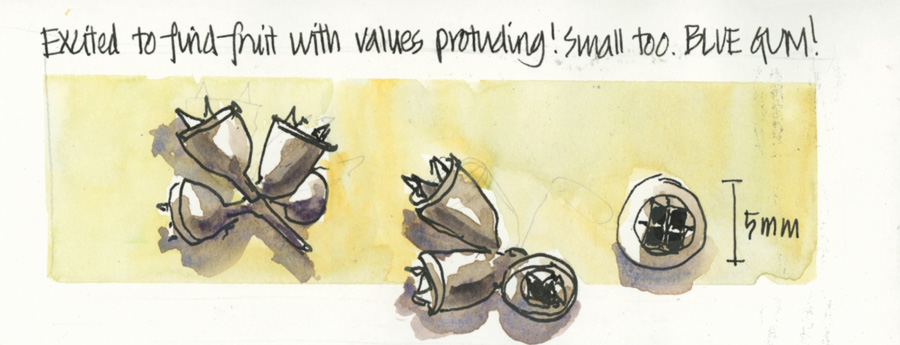
Sydney Blue Gum – Eucalyptus saligna
I’ve drawn more trunks of this tree than any other in the past few months, but putting this article together has made me realise that I haven’t documented its nuts and leaves properly!
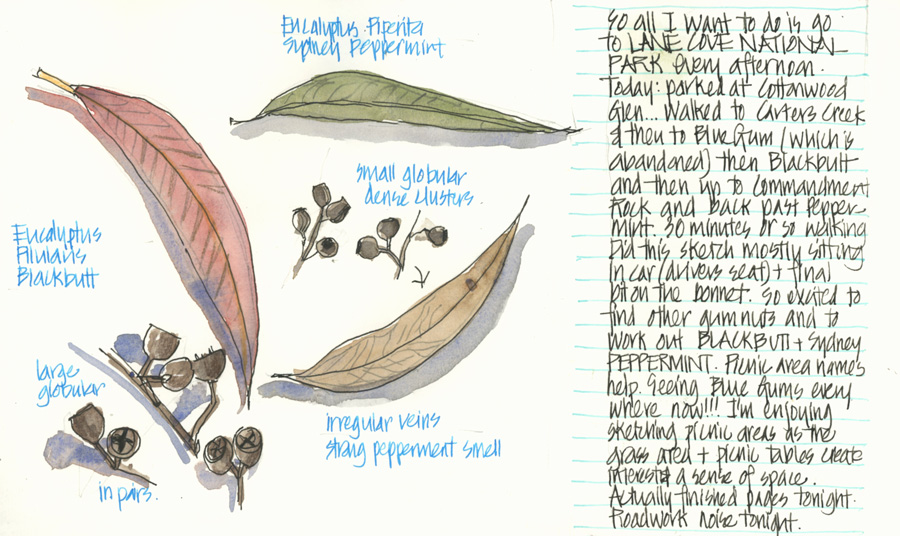
Blackbutt – Eucalyptus pilularis and Sydney Peppermint – Eucalyptus piperita
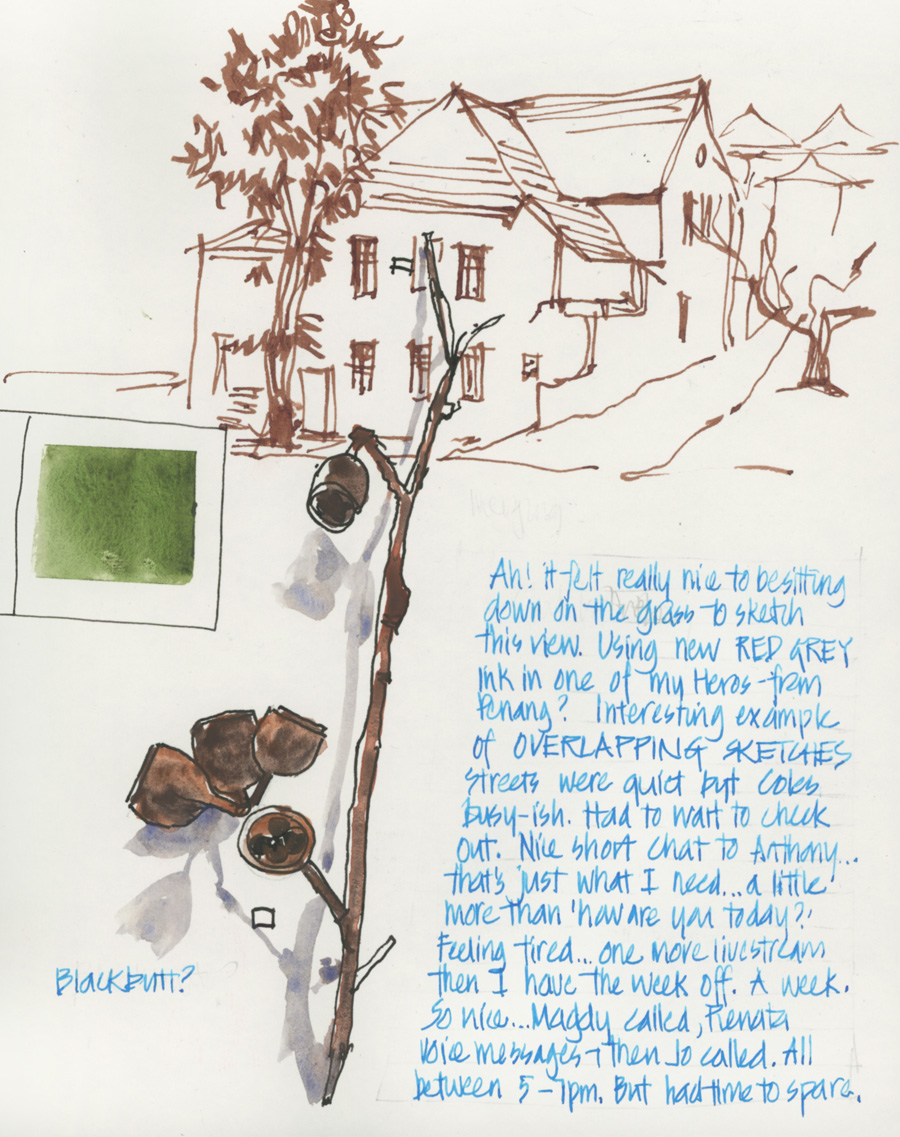
Blackbutt – Eucalyptus pilularis
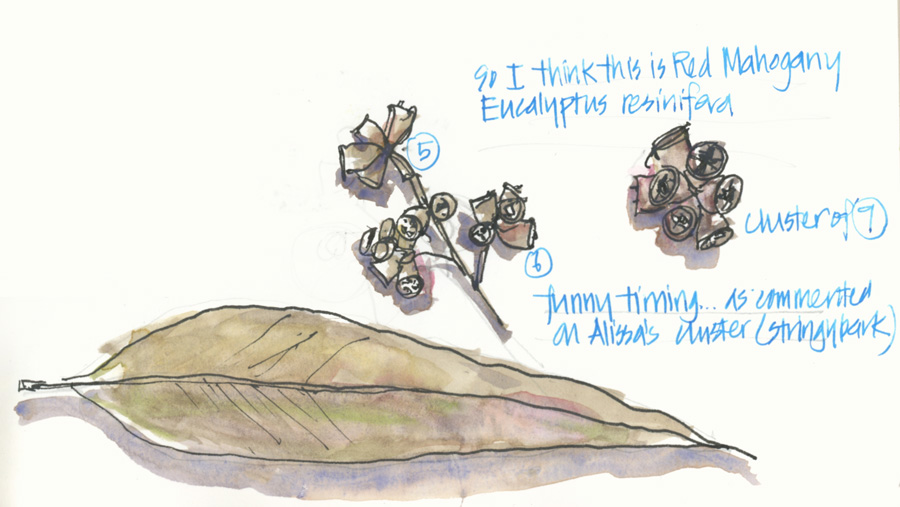
Red Mahogany – Eucalyptus resinifera
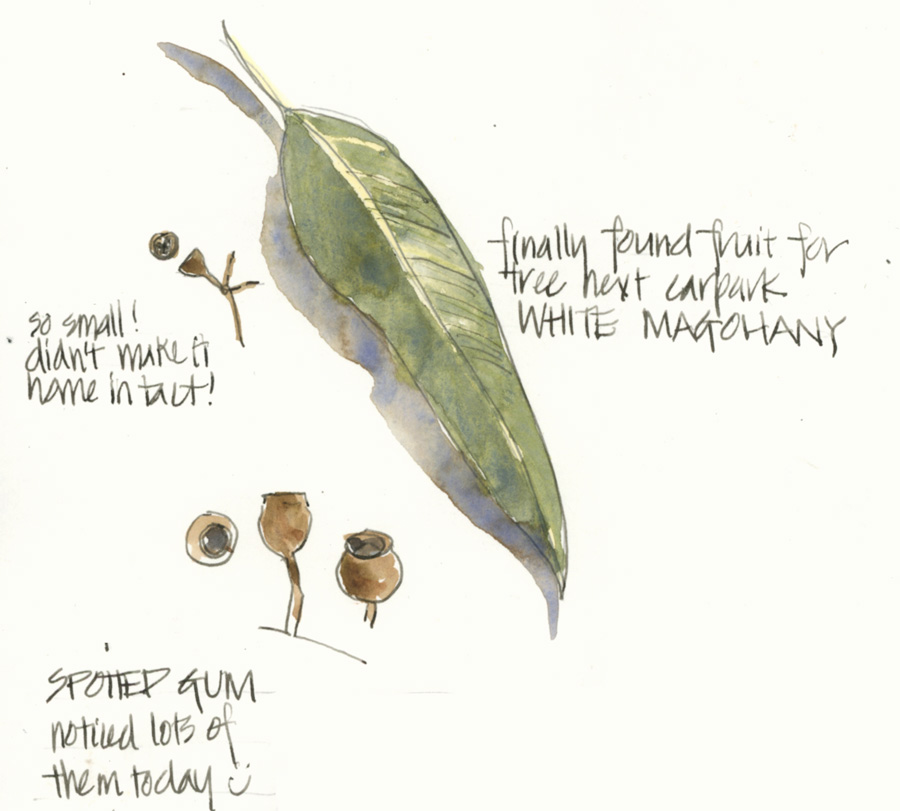
White Mahogany – Eucalyptus acmenoides and Spotted Gum – Eucalyptus maculata
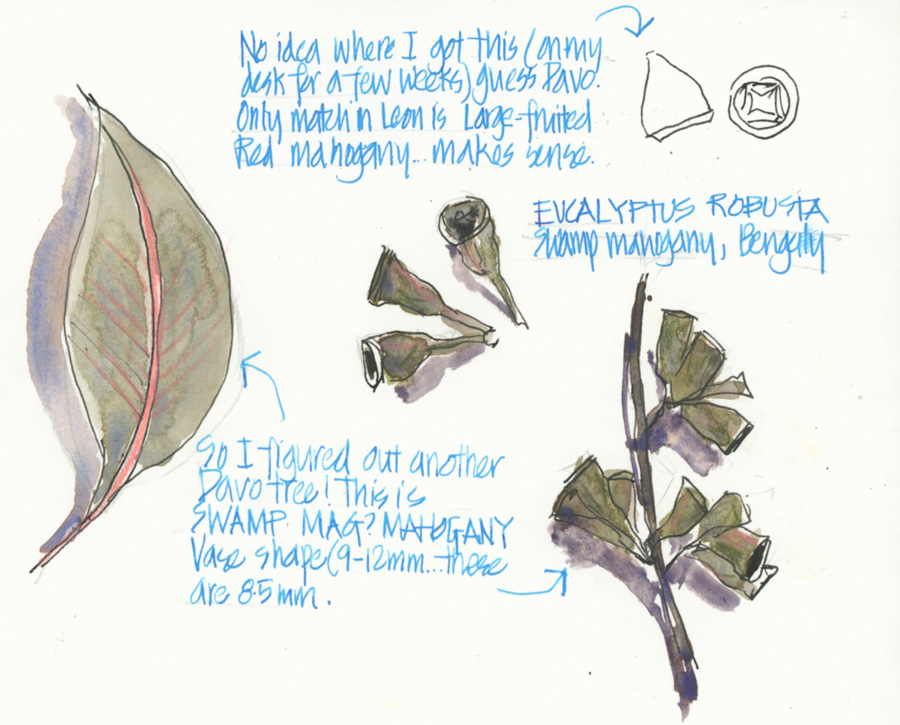
Swamp Mahogany – Eucalyptus robusta
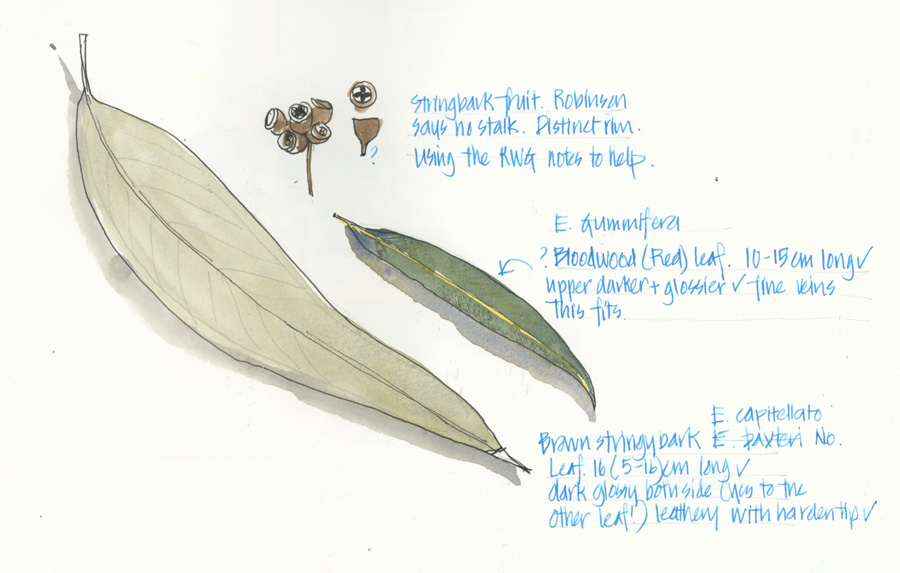
Brown Stringybark – Eucalyptus capitellata and Red Bloodwood – Corymbia gummifera
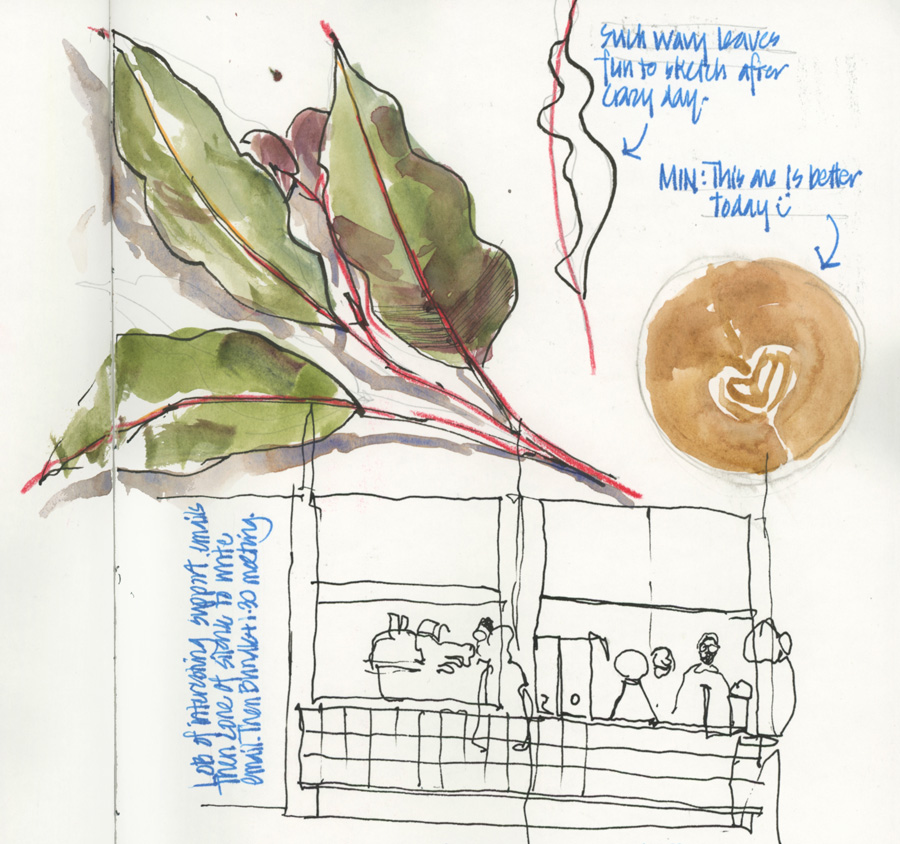
Red Flowering Gum – Corymbia ficifolia
This is actually a WA native but commonly used as a street tree in Sydney…
Other Trees
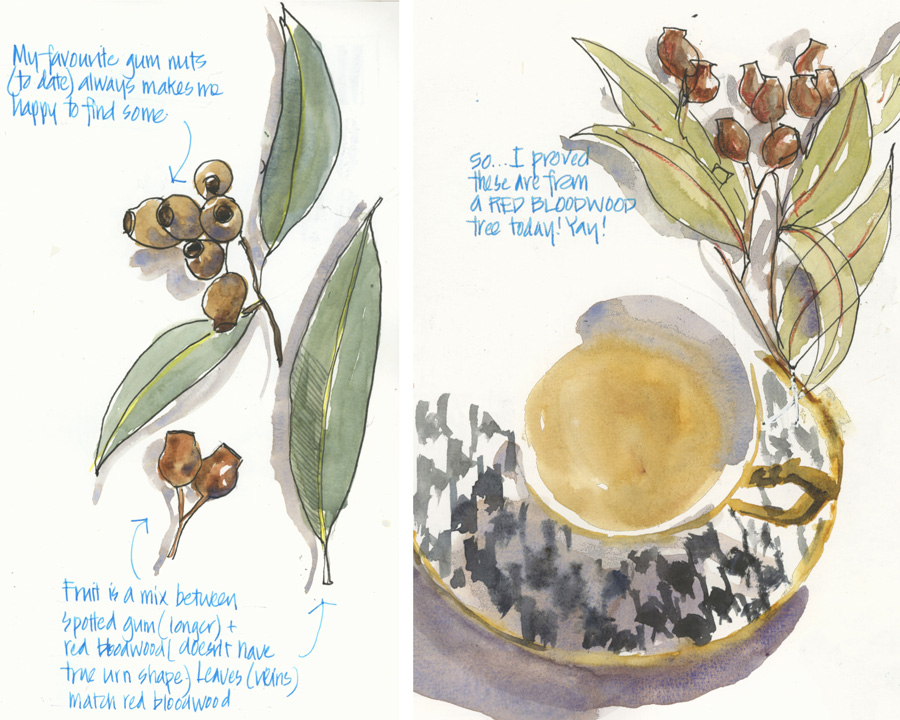
Red Bloodwood – Corymbia gummifera
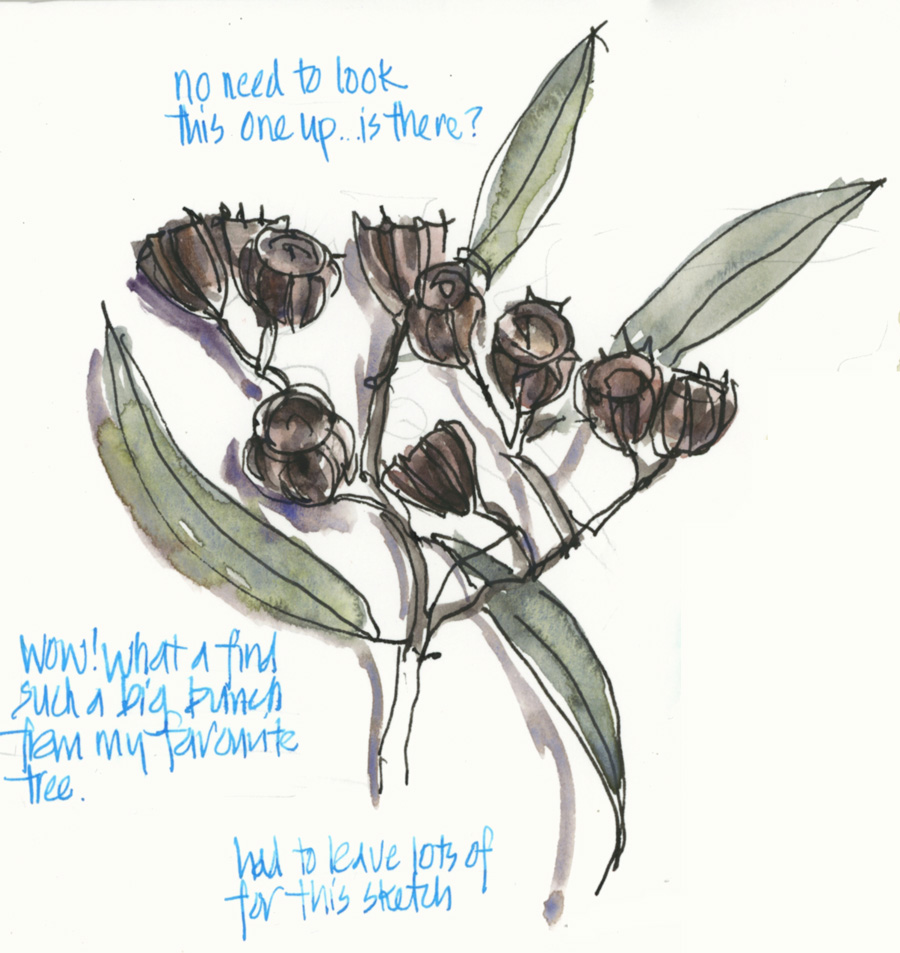
Smooth Bark Apple – Angophora costata.
Until recently this was definitely my favourite tree (now I have a few favourites!) More about this tree soon when it starts shedding its bark.

Turpentine – Syncarpia glomulifera.
These nuts were a big part of my childhood – stepping on them in the grass was not fun!
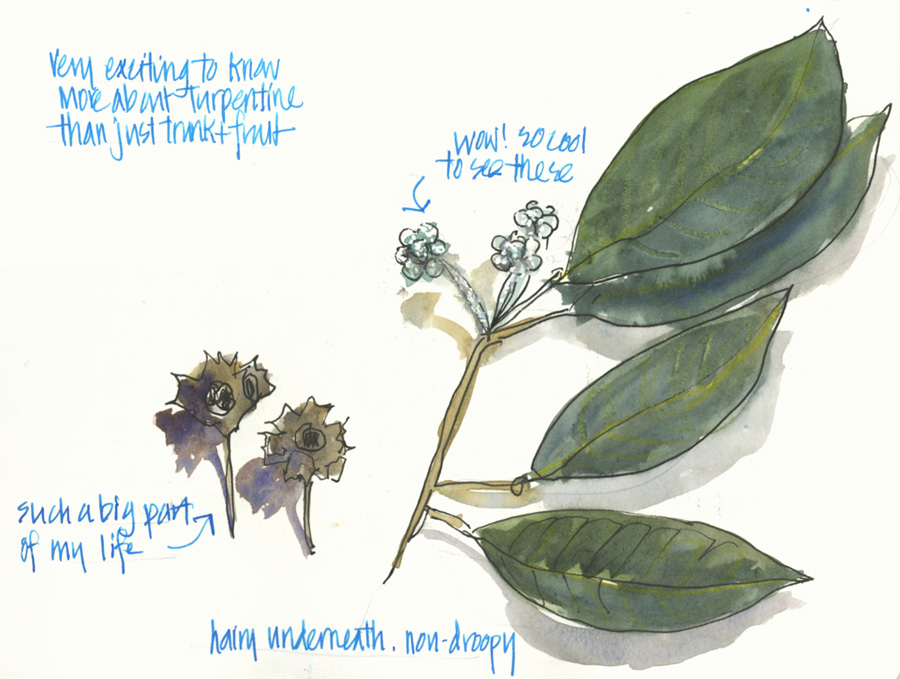
Turpentine – Syncarpia glomulifera
The canopy of the turpentine tree in our backyard was high off the ground so I never saw the leaves or the flowers.
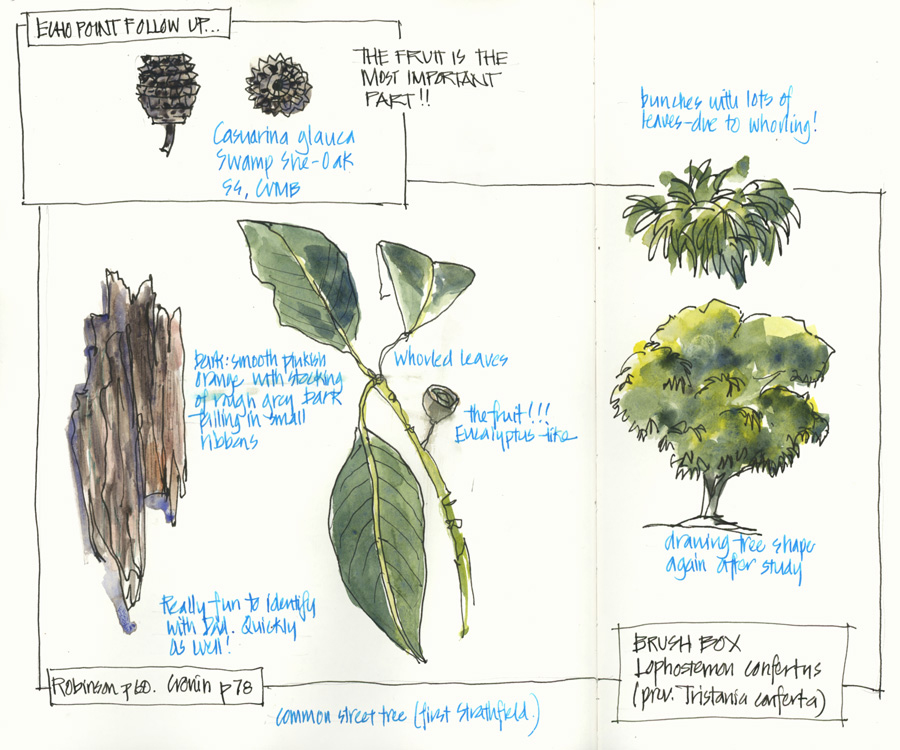
Brush Box – Lophostemon confertus and Swamp She-Oak – Casuarina Glauca
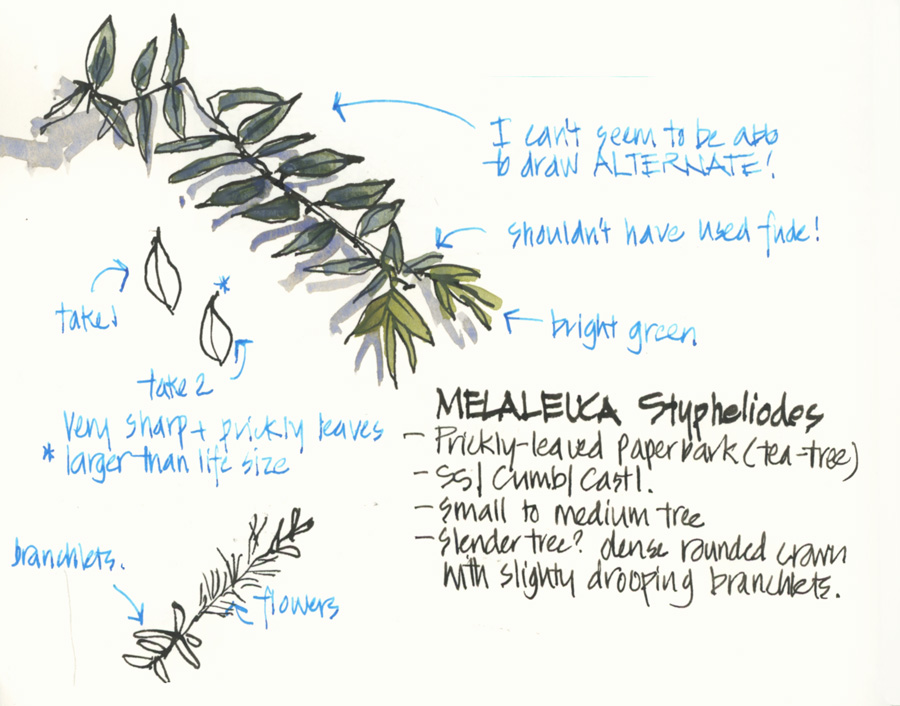
Prickly Leaf Paperbark – Melaleuca styphelioides
Hakea
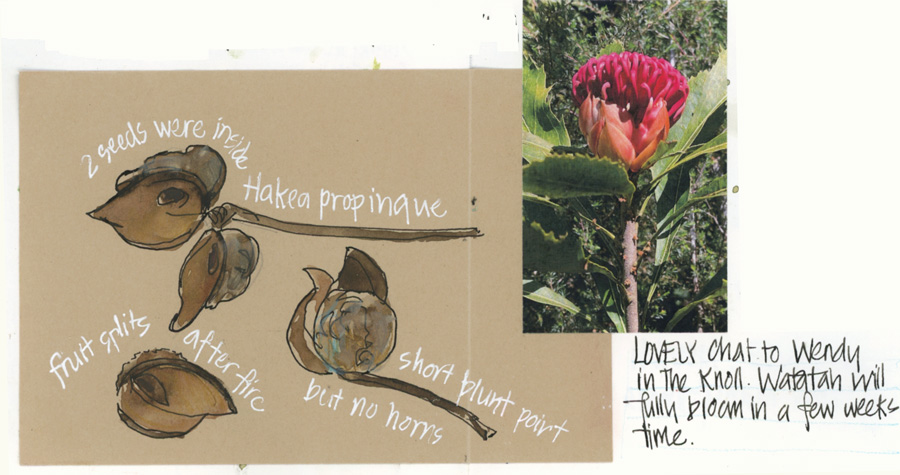
Hakeas are a shrub I specifically remember my sister talking about!
These have the most amazing (weird) seed pods which are only open by fire or when the tree dies. This first one was in a shrub that had been part of a back burn so it was open. The photo is of a waratah – the state flower of NSW.

This one was closed and still had its horns on it.
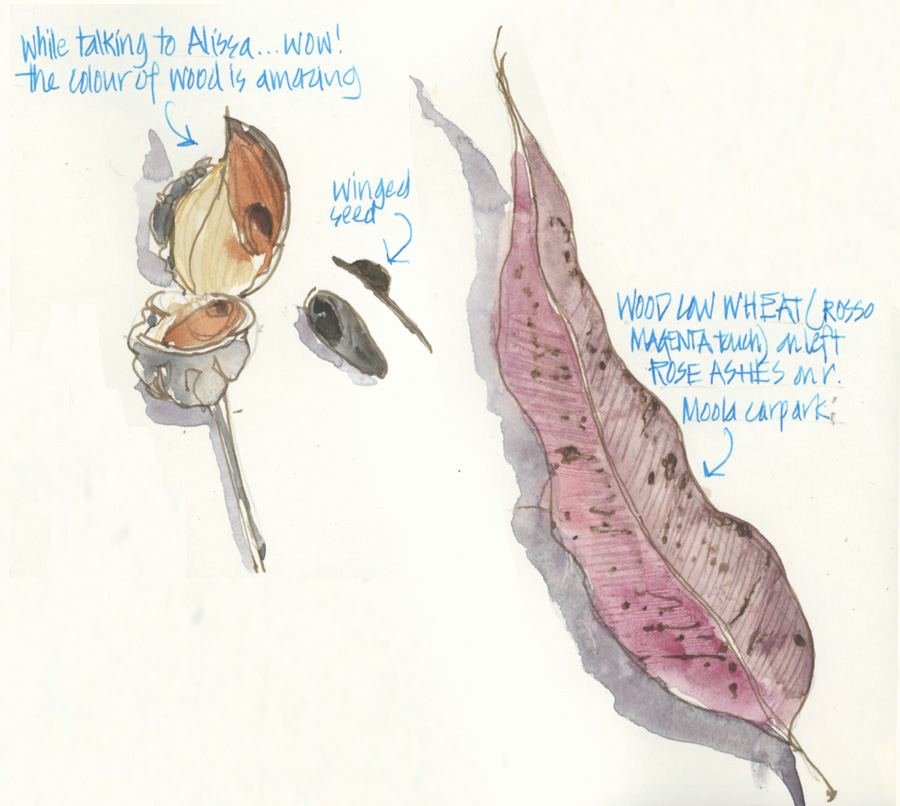
A few weeks later I realised that it had ‘died’ and opened up so I was able to find the winged seed on my ‘specimen tray’. Not sure what tree the pink leaf belongs to… but I will work it out at some point.
Wattle Collection for this year
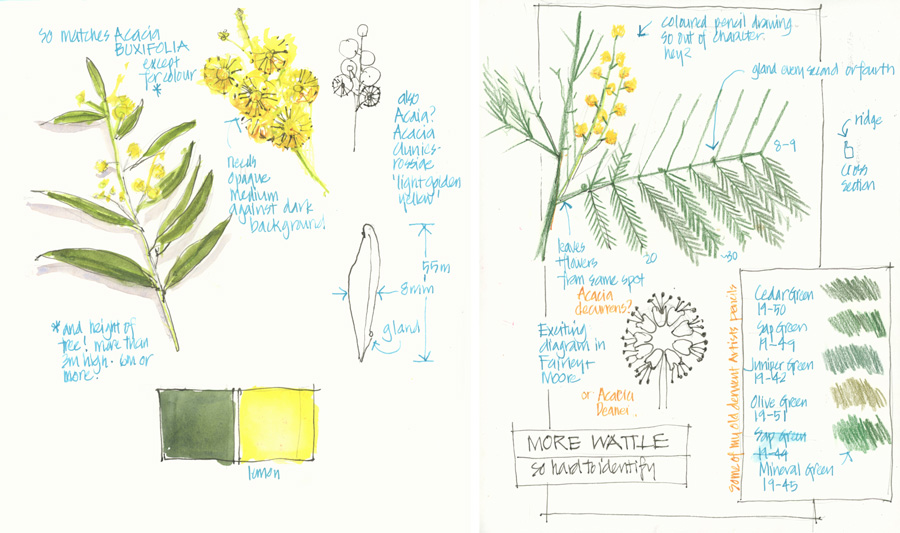
You have seen some of these before, but I wanted to put them together in one place.
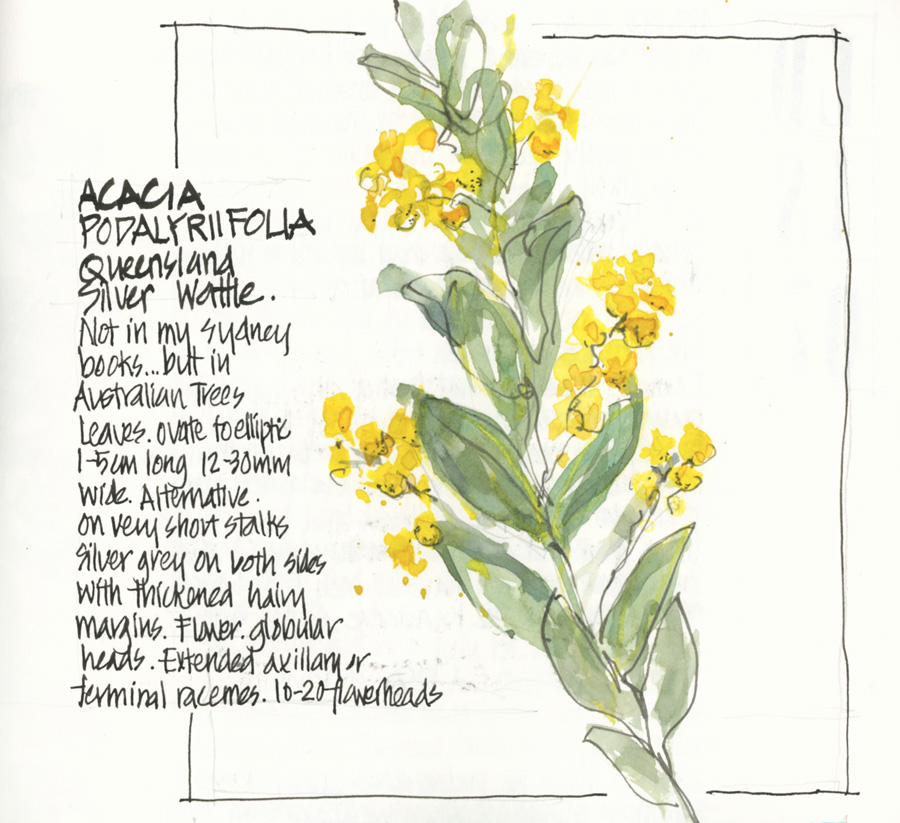
Before this year I knew there were a few different types of wattle but never realised there were so many. Being more aware of this fact meant that I saw different varieties everywhere.
Well, I’ve quite a collection of sketches so far, haven’t I? And I’m just beginning!
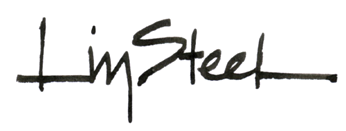
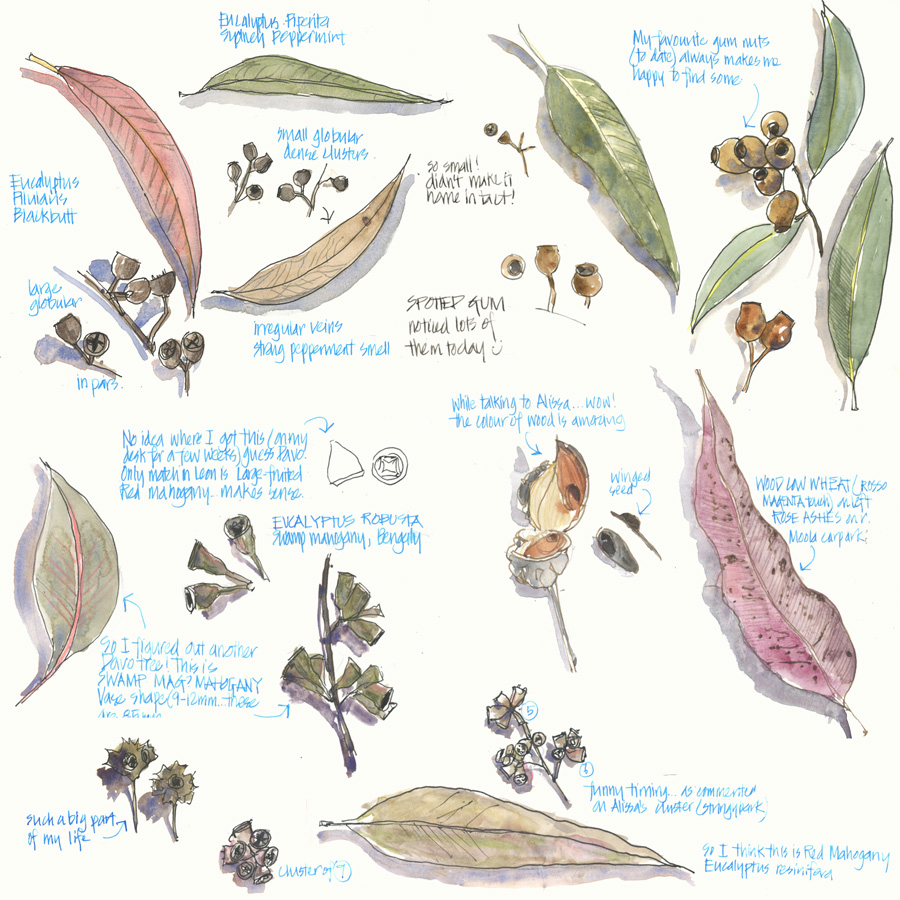
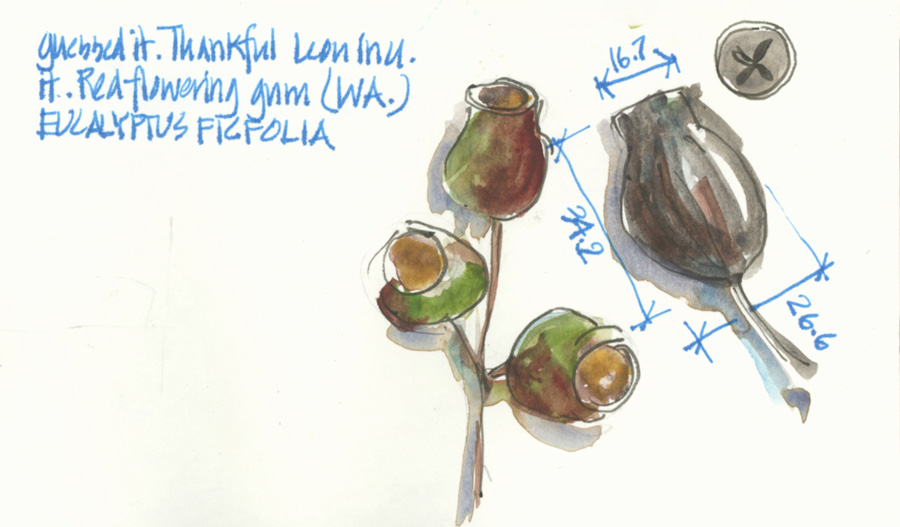
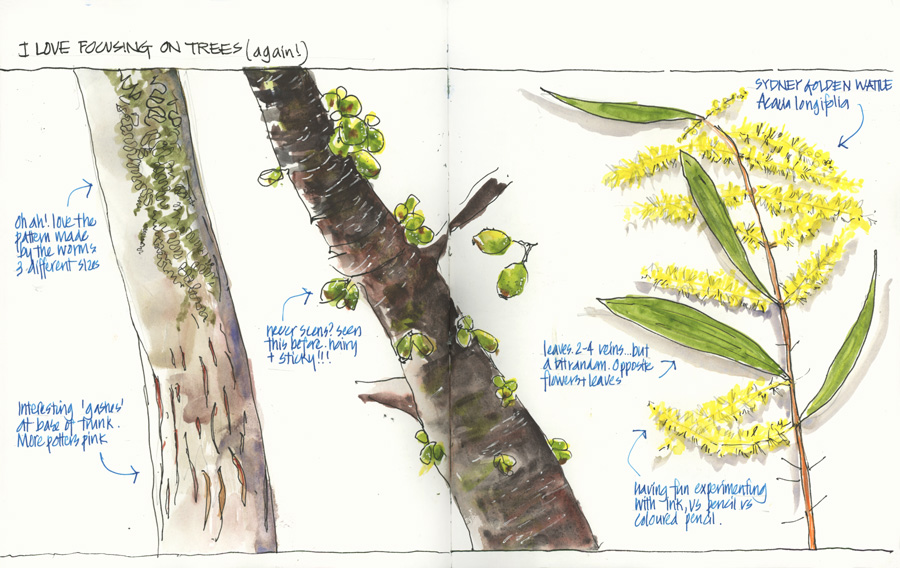
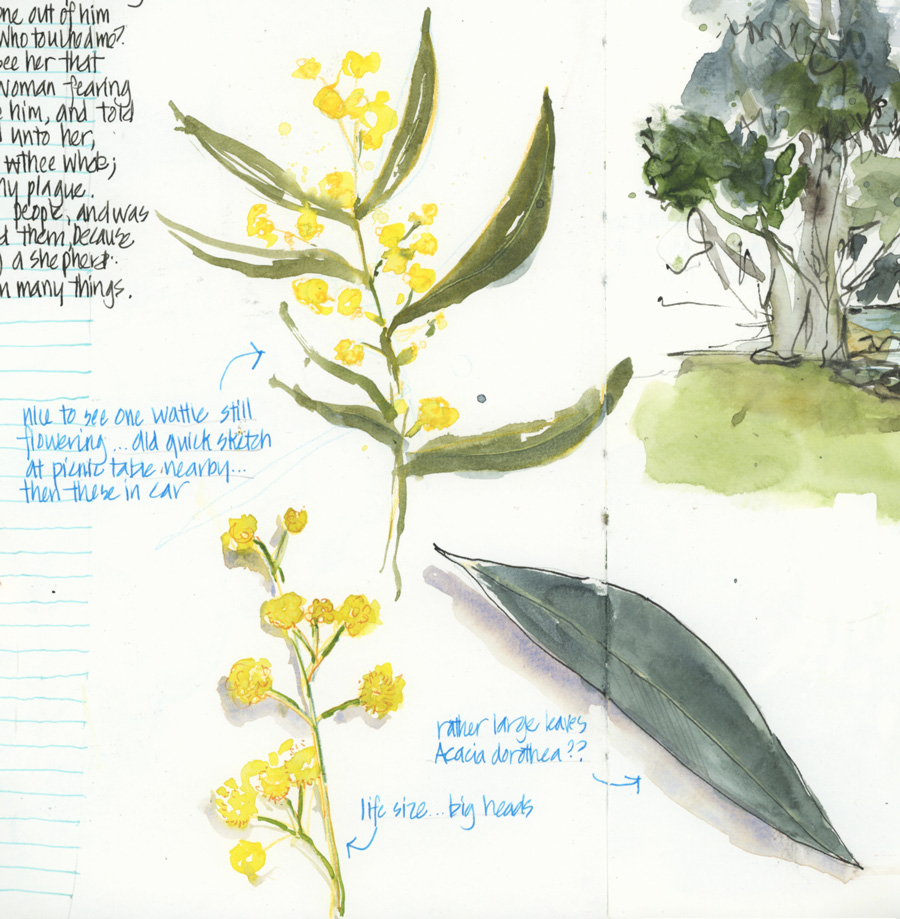
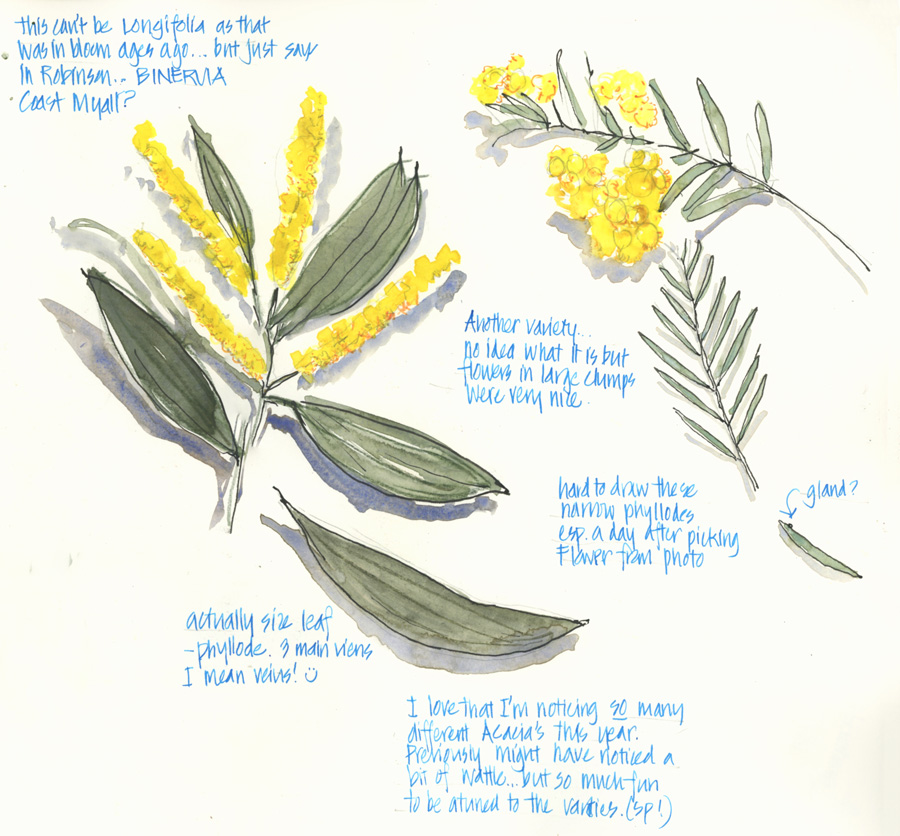
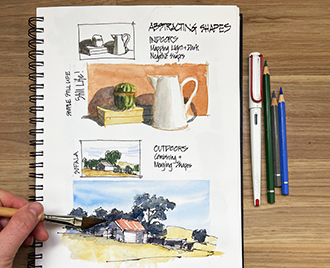

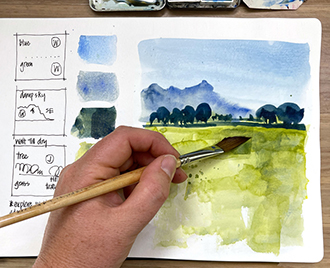
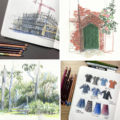
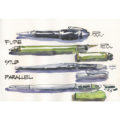
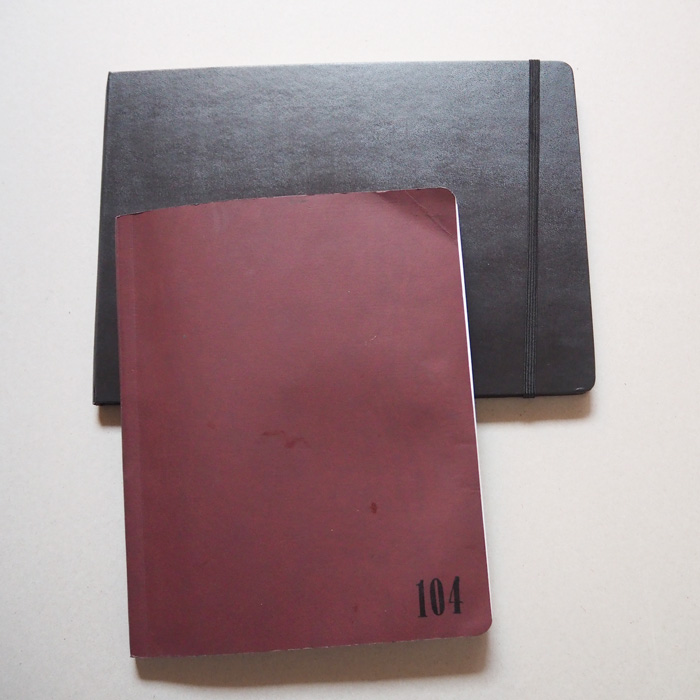
9 Comments
Stunning Liz – absolutely love these sketches. Aren’t the bottle brushes native to Australia too? Would love to see sketches of those too…..
Thanks Prashanta. Yes there are quite a few bottlebrush trees out in flower at the moment… I haven’t found one that is easy to sketch though. None (or vert few) at Lane Cove Park where I do my sketching mostly 🙂
My goodness,Liz!!! Super cool collection indeed! What a great idea – we each could explore locally, on lockdown or not, and the sketches from it seem to be faster when compared to a dwelling, so there is time for lots of it! I just went outside to see what was laying on the ground (I don’t like to break off branches and flowers!) and already found 2 cool samples for Inktober 11th and 12th, lol!!So thank you! It is fall now in the US so most plants are either starting to hibernate/looking dead or changing colors, so maybe not the best time of the year to identify a plant, but that will not stop me from collecting samples during my walk for some indoor (warm!) sketching! I am a bit afraid though as almost 2 years ago I grabbed a bunch of different leaves during my hike, that were laying around, with the intention to dry them flat. It turned out I was/am pretty ignorant about plants and managed to get a horrible reaction to Poison Sumac!! Face and all! I had to go to the doctor to get Cortisone cream to smear on all the blisters I had on my hands, face, arms and legs, LOL!! It wasn’t pretty (face was swollen!), but I can laugh now that it is behind me, HAHAHA! So watch out when you touch plants you don’t know!
I’m delighted you are just beginning! It is impressive, however, to see all the months of research and sketches in one article! These sketches are so amazing! Inspired by your bush walks, I did venture out to the Boyce Thompson Botanical gardens which does have an Australian forest exhibit. They had signs for a Ghost Gum, Eucalyptus papuana, and White Ironbark Eucalyptus leucoxylon rosea. There were much larger varieties, too, towering super high, but I will have to find their signs another day.
I’m curious what books are your research materials? I’ve got a Eucalyptus tree in my neighborhood and I’m now curious to see if I can identify it!
Thanks Jamie!!!!! And will have to see if there are any of those two trees in Sydney. I have a number of specific books on plants in the Sydney region. The best way to identify is the gum nut if you can find it.
Liz, these sketches and pages are just wonderful! Your leaves and their shadows are beautiful. The gum nuts are very interesting and your drawings are informative. I’ve never seen fruits like these.
You have inspired me to start a sketchbook of our native trees (after the group run through of Buildings!) Although I was a nature teacher and field scientist at our Audubon Sanctuary, it has never occurred to me to sketch our local trees or wildflowers! The upcoming winter will be a perfect time to sketch the tree shapes that are usually hidden in heavily leafed canopies. Thank you!
Hi Susanna – gumnuts are unique to Australia and I love the variety of leaves as well. Always fun to do a dropped shadow that merges with the object. Love your idea of a native sketchbook! Sounds wonderful!
What a collection on nature standing out with your blue writing!
The yellow flowering tree reminds me of the Mimosa blooming in late February on the Côte d’Azur in the Nice region of France. Love the shadows added to the leaves and of course, the cup of coffee.
Great idea for any of us sketchers to learn about what grows, and bloom where we live!
THanks Christine – it’s amazing how much there is right around us that we just don’t notice. Just looked it up Mimosa is an acacia so the same species as our wattle
NEWSLETTER
Subscribe for first notification of workshop + online classes and more.